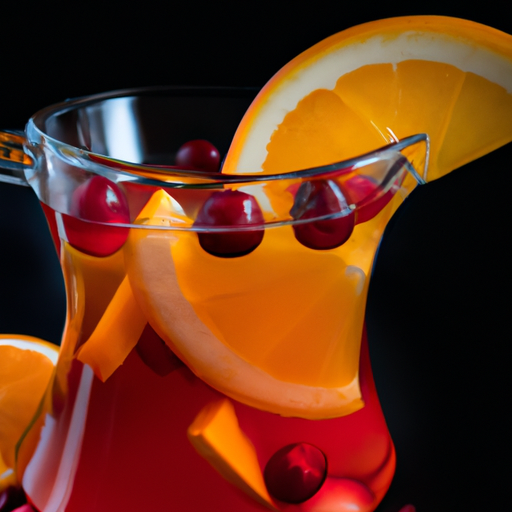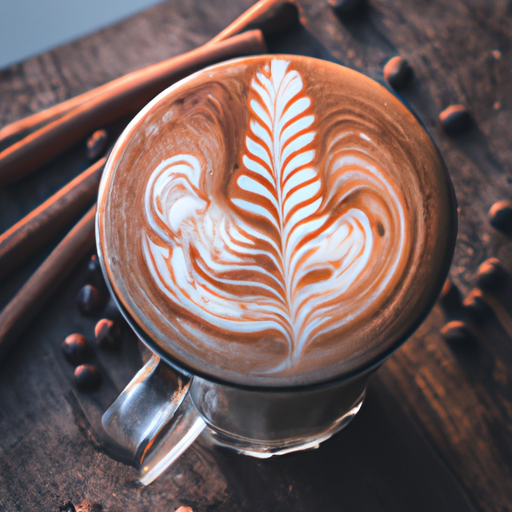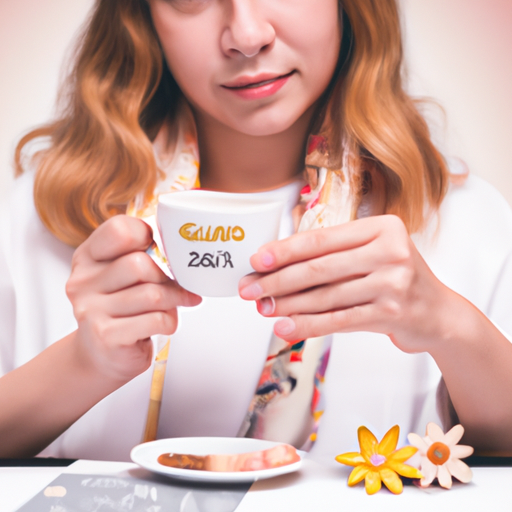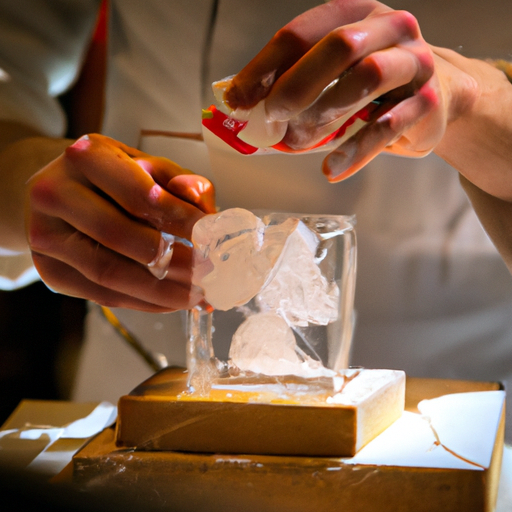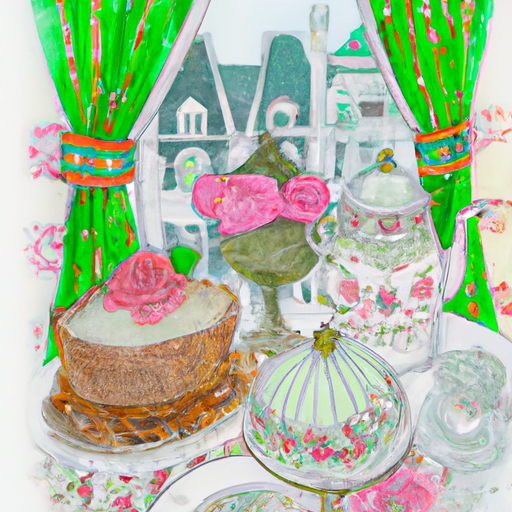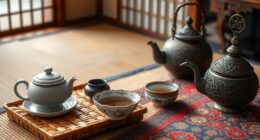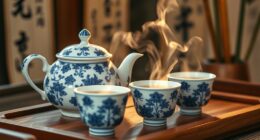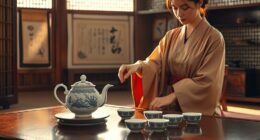The Fall-Inspired Orange Cranberry Sangria with Earl Grey is a great choice to welcome the transition of seasons. Being a fan of tea, I have always been interested in adding tea to cocktails. Through various trials, I have found a blend that is not only refreshing but also enjoyable.
This cocktail combines the vibrant flavors of oranges and cranberries with the subtle notes of Earl Grey black tea. The use of Pinot Noir or any mild red wine adds depth and richness to the drink. To enhance the citrus flavors, I recommend adding a splash of orange-flavored Cointreau Triple Sec liqueur.
One of the secrets to this sangria’s exceptional taste is allowing it to infuse overnight. This allows the flavors to meld together, creating a harmonious blend that is truly irresistible.
Whether you are a tea aficionado or simply looking for a unique and delicious cocktail, this fall-inspired orange cranberry sangria with Earl Grey is sure to impress. So, grab a glass, savor the flavors, and embrace the essence of autumn in every sip.
Key Takeaways
- Orange Cranberry Sangria with Earl Grey is a delicious fall-inspired cocktail that combines the flavors of oranges, cranberries, and Earl Grey black tea.
- It is a make-ahead cocktail that is easy to prepare, and it is recommended to let it infuse overnight for better flavor.
- The recipe uses Pinot Noir or any mild red wine, orange-flavored Cointreau Triple Sec liqueur, and Earl Grey black tea to create a flavorful and refreshing drink.
- The sangria can be garnished with an orange slice and served in wine glasses for a beautiful presentation.
What is it?
I know that the fall-inspired orange cranberry sangria with Earl Grey is a delicious cocktail that combines flavors of oranges, cranberries, and Earl Grey black tea.
One of the benefits of using frozen cranberries in the sangria recipe is that they can be used when fresh cranberries aren’t readily available. Frozen cranberries still provide a vibrant burst of tartness and add a beautiful pop of color to the drink.
Additionally, exploring different variations of sangria using Earl Grey tea can be a fun and creative way to experiment with flavors. The bergamot orange flavor in Earl Grey tea pairs wonderfully with the cranberries and oranges, enhancing the overall taste of the cocktail.
Whether you choose to use fresh or frozen cranberries, this fall-inspired sangria with Earl Grey is sure to be a crowd-pleaser.
Ingredients and Preparation
Boil water and brew the black tea, then add sugar and strain the resulting syrup. Once the syrup is ready, it’s time to assemble the delicious fall-inspired orange cranberry sangria with Earl Grey. Below is a table that lists the ingredients and their quantities needed for this recipe:
| Ingredient | Quantity |
|---|---|
| Pinot Noir | 1 bottle |
| Orange Cranberry Syrup | 1 cup |
| Orange liqueur | 1/2 cup |
| Fresh cranberries | 1 cup |
| Oranges | 2 |
| Earl Grey tea bags | 2 |
To prepare the sangria, simply mix all the ingredients in a pitcher and stir well. Make sure to refrigerate the mixture overnight to allow the flavors to infuse. When ready to serve, pour the sangria into wine glasses and garnish with a slice of orange.
For variations and substitutions, you can use different types of red wine or even white wine if you prefer. Instead of fresh cranberries, frozen ones can be used. As for pairing suggestions, this sangria pairs well with cheese and charcuterie boards, roasted turkey, or even a cozy autumnal soup. Enjoy!
Tips and Serving Suggestions
Refrigerate the sangria overnight for optimal flavor infusion, allowing the ingredients to mingle and create a symphony of taste sensations.
This fall-inspired orange cranberry sangria with Earl Grey is the perfect drink to serve at your next gathering or autumn celebration. The rich flavors of oranges, cranberries, and Earl Grey black tea come together to create a warm and inviting beverage that’s sure to impress your guests.
When serving, pour the sangria into wine glasses and garnish with a slice of orange for an extra pop of color.
This sangria can be enjoyed on its own or paired with a variety of dishes, such as roasted meats, cheese platters, or even a slice of pumpkin pie. It’s a versatile drink that’s perfect for any occasion, whether it’s a cozy night by the fire or a festive holiday party.
So gather your friends and loved ones, and raise a glass to the flavors of fall with this delightful orange cranberry sangria with Earl Grey.
Frequently Asked Questions
Can I use a different type of tea instead of Earl Grey in this sangria recipe?
Yes, you can definitely use a different type of tea in this sangria recipe to customize it to your taste preferences. Some alternative tea options for Fall-inspired sangria could be hibiscus tea, chai tea, or even green tea.
Can I substitute the Cointreau Triple Sec liqueur with another orange liqueur?
Sure, you can substitute the Cointreau Triple Sec liqueur with another orange liqueur. Just make sure to choose one that complements the flavors of cranberries and oranges. If you prefer a non-alcoholic version, you can omit the liqueur altogether or use a non-alcoholic orange syrup for a similar flavor. Cheers!
Can I use a different type of red wine other than Pinot Noir?
Yes, you can use a different type of red wine for the sangria. Some options include Merlot, Cabernet Sauvignon, or Zinfandel. If you prefer a non-alcoholic alternative, you can use grape juice or cranberry juice as a substitute.
Can I make this sangria without alcohol?
Sure, you can definitely make a non-alcoholic version of this fall-inspired sangria! Instead of using wine and liqueur, you can substitute with cranberry juice, orange juice, and sparkling water. Add some cinnamon and cloves for extra warmth. For a kid-friendly version, skip the tea and replace it with apple cider. Cheers!
Can I use dried cranberries instead of fresh or frozen cranberries?
Yes, you can use dried cranberries instead of fresh or frozen cranberries in the sangria recipe. They will add a slightly different texture and flavor. As for alternative tea options, you can try using other black teas like Assam or Darjeeling for a different twist.
Conclusion
After delving into the world of fall-inspired cocktails, I can confidently say that the orange cranberry sangria with Earl Grey is a true delight. The combination of flavors, from the tangy cranberries to the aromatic Earl Grey tea, creates a harmonious blend that’ll awaken your taste buds.
This cocktail isn’t only easy to make but also a refreshing choice for those looking to transition from summer to autumn flavors. So, go ahead and indulge in this delicious and impressive drink – you won’t be disappointed!
Cheers to the flavors of fall!

